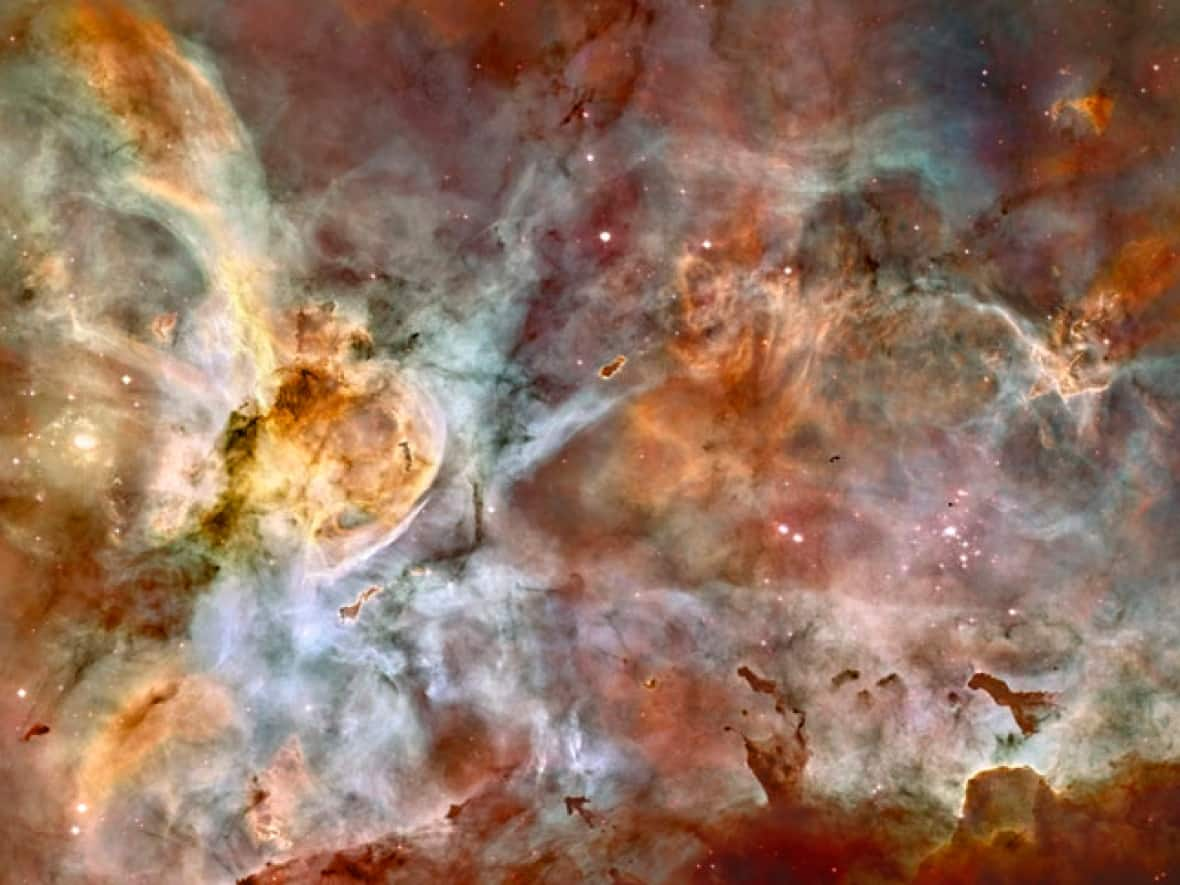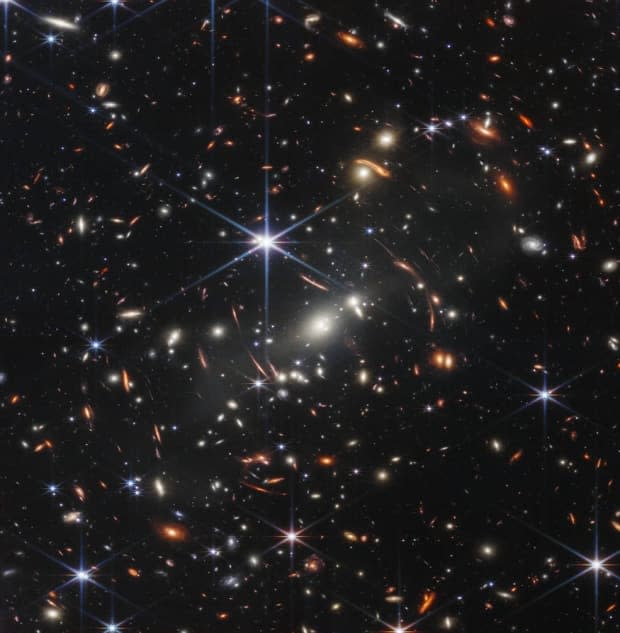2 Edmonton scientists excited to use James Webb telescope for their research

As more images from the James Webb Space Telescope are expected to come out Tuesday, two Albertan astrophysicists are full of anticipation.
Canada is guaranteed five per cent of the telescope's working time, and two scientists from the University of Alberta are ready to use some of it for their research.
The work on the James Webb began in the mid-90s. Its development and construction cost $10 billion US. Unlike its famous predecessor, the Hubble Space Telescope, the James Webb "sees" the universe mainly in infrared.
This allows it to see through the cosmic dust, which absorbs a lot of visible light. It can look much farther into the universe than the Hubble, so this telescope will allow scientists to take a peek at a much earlier period of the universe's existence.
For its part, Canada has provided a fine guidance sensor, which keeps the telescope locked on a celestial target. It also contributed the spectrograph that can be used to determine the composition of objects it took images of, including the makeup of atmospheres of exoplanets. Those are planets not in a solar system.
"This telescope will be able to look further back in time, further out into space, and look at the early formation of galaxies in our universe. It's going to give us new insight in terms of how the universe kind of came to be," said Frank Florian, the director of the planetarium at the TELUS World of Science.
"This is going to open up so many more research doors. I think the findings from the James Webb Space Telescope are going to be really mind boggling. There's going to be a lot of researchers, both young and old, that will be involved in looking at all the data."
A star is born
Two of those researchers at the University of Alberta are ready.
Erik Rosolowsky, a professor of physics, succeeded in securing 20 hours of telescope time, when the James Webb will be pointed at a nearby galaxy that he chose.
"The key thing that my research is chasing is trying to understand this really unknown and unexplored part of the star formation process and really how the diffuse clouds of gas in the galaxy get converted into stars," he said.
It is the process that birthed all the stars in the universe, including the Sun.
Rosolowky and his colleagues believe that the exact process of star formation determines how many planets they'll have and whether those planets could sustain life.

His colleague Gregory Sivakoff, also a professor of physics, will use his telescope time to study the "stellar undead."
These are the objects in space such as black holes, neutron stars and white dwarves that are located in proximity with another star. All these objects used to be stars; they have exhausted their fuel and collapsed.
Those objects draw material from the star, like a vampire, and a disk of the material forms around the object.
Besides scientific research, both scientists are committed to educating a new generation of scientists who will be able to maintain Alberta's strong position in space exploration.
"I have a really good fortune of working with many junior scientists," said Rosolowsky.
"My job is to make sure that these junior scientists are learning skills that they could use in astronomy, but also could then take these novel skills for interpreting data and exploring images and understanding the universe, and use those tools throughout a variety of jobs and careers."
"Alberta has a lot of strong presence in studying the universe," Sivakoff said.
"I view a lot of what we do in terms of almost the inspiration we can give to the next generation of Albertans, regardless of what their field is."


